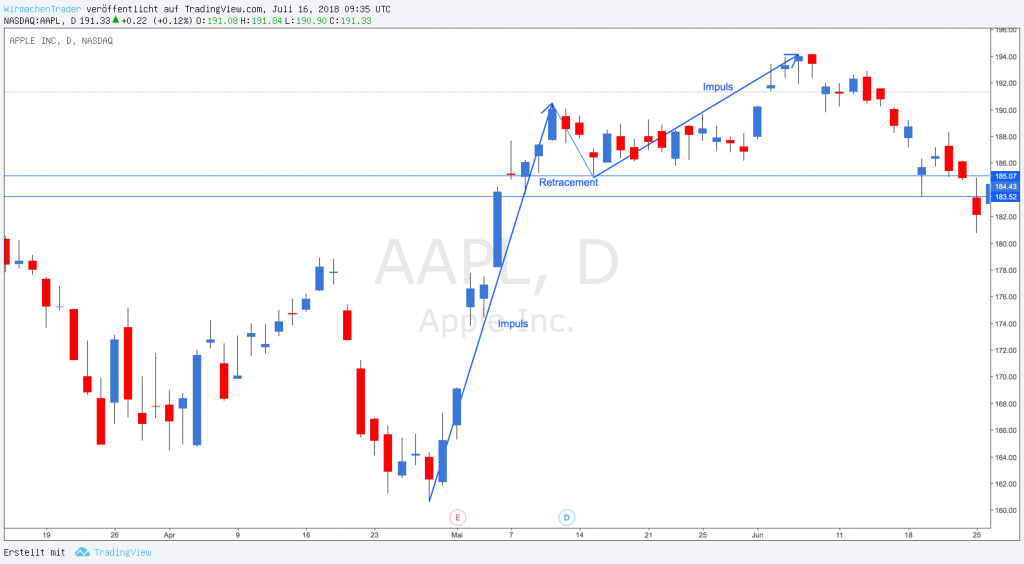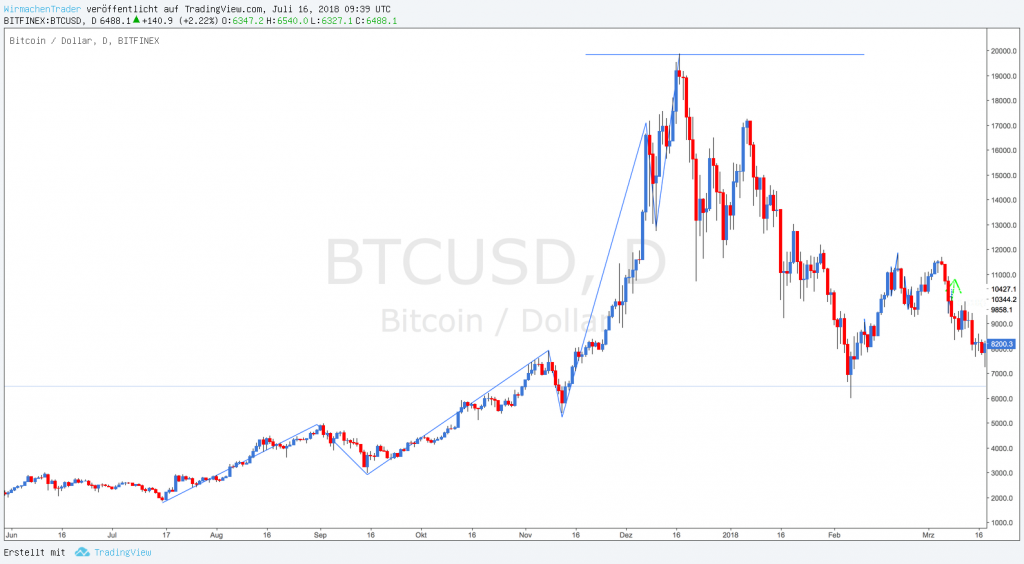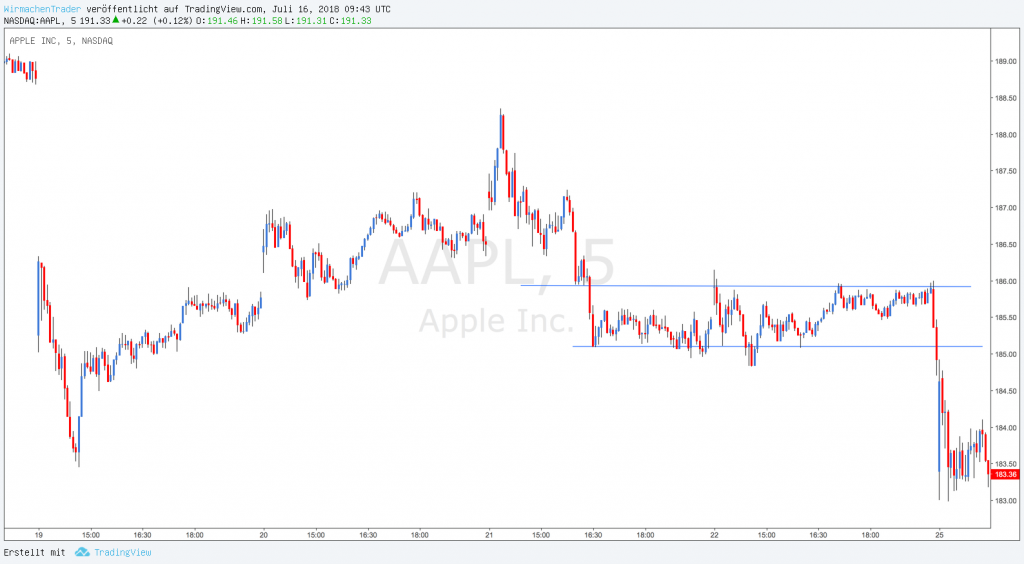What is Technical Analysis?
Technical analysis – also known as chart analysis – is the way of predicting future directions, timing, and strength of movements based on price changes. Only the technical parameters (price, time, volume) of a stock are used. Technical analysis requires a complex understanding of chart patterns and technical indicators.
The term technical analysis is used to distinguish it from fundamental analysis, which examines a company's fundamental indicators such as annual and quarterly earnings per share, book value, sector strength, and growth potential. The difference between the two is also evident in their application. While the data from fundamental analysis usually has little impact on short-term investors such as day traders, it plays a significant role in long-term investments. The opposite is true for technical analysis. Investors with a longer-term approach will say that short-term changes and fluctuations in the market are irrelevant to a longer-term investment.
Basics of Technical Analysis
As a trader, you work on the edge of uncertainty. Nobody can predict the future course of a stock with absolute certainty. The only thing we have is assumptions and probabilities about it. A good trader is someone who can express his actions well in probabilities and act accordingly. Technical analysis is a tool to better assess the probability of a movement.
The key to success lies in understanding how patterns of market movements appear in true buying and selling behavior. This allows for predicting future movements. This is the true core of technical analysis and is not something that can be reduced to a few simple variables and blindly applied. Instead of focusing directly on specific trading patterns or setups, it is essential to understand the basic principles of price action in all markets and time frames. These rules generally apply to stocks, futures, forex, bonds, and other liquid markets. We see the same principles that lead to price action in the minute or monthly chart. Similarly, the principles can be described as universal and unchanging. We see the same patterns in grain prices from the Middle Ages, stocks in the 18th century, and today's markets. Of course, traders must adapt to new markets and time frames. Nonetheless, our goal is to develop a universal concept that serves as a basis for every market.
Principles of Technical Analysis
Markets always alternate between trends and ranges. In trends, it is more likely that they continue rather than end. When trends end, there are usually two specific types. Furthermore, we will look at what patterns look like when support and resistance hold or fail. This principle is responsible for many of our losses in the market. Why is that? To put it simply: what is right in one market phase is fundamentally wrong in the other market phase. If we read the context wrong, we make a losing trade after the next. Understanding and recognizing the difference between price action in a trend and price action in trading ranges is therefore the first and most important skill in technical analysis. Generally speaking, fading (going against the trend) is the correct strategy when we are in trading ranges because supports and resistances are tested in these ranges before we return to the range.
This type of trade is entirely wrong in a trend. You will lose every trade and the market will just go higher and higher. In trading ranges, supports and resistances usually hold. These ranges get smaller as the markets find levels where the selling pressure is sufficient to prevent buying or the buying interest decreases. Fade trades usually work in these conditions because the market trades back and forth. It initially seems easy to trade in ranges: sell at resistances and buy at supports. In reality, however, this is not so simple, as resistances can fail and trends can start. There are also numerous cases where resistances and supports only fail briefly to create new levels slightly higher or lower. This is a classic example of what historically works well but is super difficult and complex in real time. One possible strategy in this context is the harmonic patterns, which we trade ourselves and teach to beginners because they are measurable and follow clear rules.
Examples of Technical Analysis
As explained in the previous section, there are generally two specific types: trades in trend and trades in ranges. These two types are now being picked up and explained with examples.
Trades in Trend
Instead of starting with moving averages or chart patterns, your mental energy should first be focused on learning the principles of technical analysis. In trends, the classic price pattern is an impulsive movement followed by a retracement and another leg in the original impulse movement. One of the simplest and best technical trades lies in correctly identifying the impulse movement. The entry should be made on the retracement. Here, too, we often see examples with harmonic patterns when we combine two time frames.

Classic trend structure. Impulse - Retracement - Break of previous resistance using Apple (AAPL) as an example.
Eventually, every trend ends. This usually happens in one of two ways. The first possible way is that the trend weakens over time. The impulses become shorter, the retracements become deeper. The momentum in general decreases. At this point, the market is said to be "tired." Resistance begins to hold against the trend and the first lower low is made. This development is clearly visible in the above figure and represents the quieter and friendlier variant.

Trend reversal with a parabolic blowoff using Bitcoin as an example
On the other hand, there are so-called "blow offs," which are represented by parabolic movements. In these cases, the trend becomes stronger and stronger. The emotions of many market participants come into play. The fear of missing out (FOMO) increases. A vacuum is created and the market collapses. From greed comes panic, leading to mass sales.
Trades in Ranges
At this point, we can also talk about the pitfalls of trend reversals. How often have we traded the absolute high or low ourselves? Probably a few times. How often have we been able to profit from the reversal of this trend correctly and appropriately? Most likely rarely. Why is this? What have we talked about so far? Markets alternate between trends and trading ranges. It is therefore natural that we transition to a trading range first and only then make the downward trend. And what have we done meanwhile? We have equalized our position because it is not doing what we expected. But that is the wrong concept! In trading ranges, it is important to observe the behavior at the supports and resistances. A characteristic pattern in this context is the bounce at the respective level. Prices that trade near the level and bounce directly with momentum.
Levels do not have to hold exactly to the cent. Often these are the tests that don't hold exactly that are better. Resistances are broken, but no one buys above this level. This should be seen as additional confirmation, but of course, it makes placing the stop-loss more difficult.
If the price comes to rest at the level and does not bounce, this indicates an imminent failure of this structure. Buyers can keep the market near the resistance and accumulate more. Sellers do not have enough pressure and cannot drive the buyers away. So, if you're shorting at a resistance and the market doesn't bounce off this level, you should consider liquidating the trade. Another example: The market is sitting on a support for a long time. This can be boring, not only for you, but also for other market participants. Nevertheless, we know that a trend can emerge from this range. The tip at this point is to give up the position if we do not go higher from the support in a timely manner or have clear signs of a trading range.

Price near support
It is a sign of weakness, not strength, as most would think. This range, therefore, often breaks below the support level and initiates a downward trend! So if we see ourselves coming to the same level three or four times, we should be careful, as this is not the behavior we want to see in the situation.
Summary of Technical Analysis
- Markets alternate between trends and trading ranges.
- Trends end in one of two ways: Slow "rollover" or parabolic movements.
- When support and resistance hold, there is a bounce at these levels.
- On the contrary, levels are likely to fail when the market comes to rest near these levels.